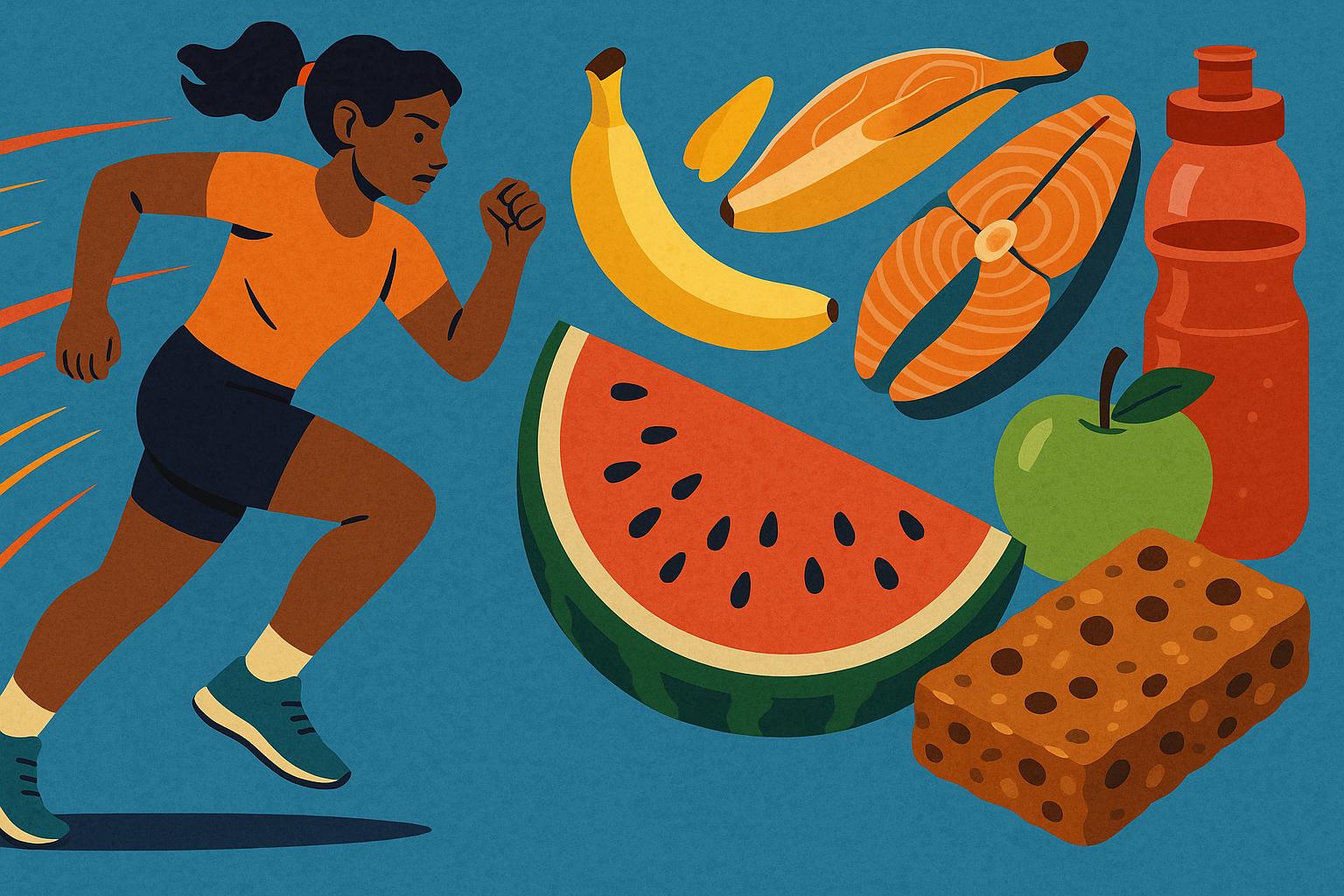Running for Weight Loss: Tips That Truly Make a Difference
Running is one of the most effective exercises for weight loss, offering a combination of cardiovascular benefits and fat-burning potential. Whether you’re just starting your fitness journey or have been running for a while, there are specific techniques and tips that can help maximize the impact of your runs on weight loss. In this article, we’ll dive deep into the top running tips that actually work, and provide you with the tools to achieve your weight loss goals.
The Power of Running: How It Affects Weight Loss
Running works wonders for weight loss because it burns calories efficiently and activates your metabolism. As a high-intensity cardiovascular exercise, running increases your heart rate and helps to torch fat. But the magic doesn’t stop there—running also builds lean muscle, especially in the lower body, which increases your resting metabolic rate. This means you continue burning calories even after you’ve finished running, thanks to the afterburn effect (excess post-exercise oxygen consumption or EPOC).
One of the key factors in weight loss is creating a calorie deficit, and running is a powerful tool to help achieve that. However, it’s not just about running hard and fast—consistency, form, and a smart approach to training are just as important. The following tips will guide you through making running a more effective and sustainable part of your weight loss plan.
Consistency Is Key: Building a Routine
When it comes to weight loss, consistency is essential. One of the biggest mistakes people make is expecting immediate results after a few runs. In reality, sustainable weight loss requires dedication and a consistent routine. To make running a powerful tool for weight loss, aim to run at least three to four times a week.
Your runs should include a mix of easy runs, interval runs, and long runs to keep your body challenged and continuously burning fat. Start slow and gradually increase the intensity and duration of your runs over time. Remember, it’s not about how quickly you run, but about creating a habit and progressively challenging your body.
It’s also helpful to track your progress. Use a fitness tracker or an app to monitor your runs, distance, and pace. Tracking helps you stay motivated and allows you to see improvements over time, which is important for both mental and physical progress.
Varying Your Runs: Why It’s Crucial for Fat Loss
One of the best strategies for effective weight loss is varying your runs. This not only keeps things interesting but also ensures you’re targeting different energy systems in your body, which leads to more fat burn and enhanced stamina. Mixing up your runs helps prevent your body from adapting to a single routine, which can lead to a plateau.
Interval Training: Interval training is a great way to torch calories and increase your metabolism. Alternate between high-intensity sprints and lower-intensity recovery periods. For example, sprint for 30 seconds, then walk or jog for 1 minute. Repeat this cycle for 20 to 30 minutes. The high-intensity bursts increase your calorie burn during and after the run, and they also improve your cardiovascular fitness.
Tempo Runs: Tempo runs involve running at a challenging but sustainable pace for a set amount of time. This kind of run helps improve your lactate threshold (the point at which lactic acid builds up in your muscles) and increases endurance. When performed regularly, tempo runs allow you to run longer distances at a faster pace, increasing your calorie burn and fat loss over time.
Long Runs: Long, steady runs are excellent for building endurance and burning fat. Aim for one longer run each week, gradually increasing the distance as you become more conditioned. These runs are great for fat burning, especially when they last 45 minutes or longer. They also help to boost your mental toughness, as running for an extended period requires focus and determination.
By mixing these types of runs into your weekly routine, you’ll continuously challenge your body, improve your stamina, and burn fat more effectively.
Proper Nutrition: Fueling for Weight Loss
While running is a fantastic fat-burning exercise, nutrition plays an equally important role in weight loss. The key to using running as an effective weight loss tool is fueling your body properly before and after your runs.
Before your run, you want to fuel up with easily digestible carbohydrates. A light snack like a banana or a slice of toast with peanut butter provides quick energy for your muscles without weighing you down. It’s important not to overeat before a run, as this can lead to discomfort, cramps, or fatigue during your workout.
After your run, your body needs to recover. This is where protein comes into play. Consuming a post-run snack with both protein and carbohydrates helps repair muscle tissue and replenish glycogen stores. A smoothie made with protein powder and fruit, or a small meal like eggs and avocado on whole-grain toast, can do wonders for recovery.
One key thing to remember is portion control. While running does burn calories, it’s easy to overcompensate by eating too much after a run. Keep track of your calorie intake, and make sure you’re not consuming more than you’re burning.
Hydration: A Crucial Component for Weight Loss
Staying hydrated is essential for performance, recovery, and weight loss. Dehydration can lead to fatigue, cramping, and reduced calorie burn. Drinking water before, during, and after your runs helps maintain energy levels, regulate body temperature, and improve your overall performance.
If you’re running for longer than 30 minutes or in hot weather, consider drinking a sports drink that replenishes electrolytes. This can help prevent dehydration and muscle cramps, ensuring that your body remains in an optimal state for fat loss. However, keep in mind that some sports drinks can be high in sugar, so choose options that are low in calories and sugar content.
Running Form: How It Impacts Efficiency and Results
Proper running form isn’t just about preventing injury—it’s also about running efficiently, which can make a big difference when it comes to weight loss. When you run with good form, you conserve energy, maintain a steady pace, and avoid unnecessary muscle strain.
Focus on keeping your posture upright and relaxed, avoiding slouching or leaning too far forward. Keep your arms bent at a 90-degree angle and swing them naturally with each stride. Avoid overstriding, which can cause unnecessary impact and slow you down. Instead, aim for a quick cadence with shorter, lighter steps to maintain a steady rhythm.
Incorporating strength training into your routine can also improve your running form. Targeting key muscle groups like your core, glutes, and legs will not only make you a stronger runner but also improve your posture and reduce the risk of injury, allowing for more effective weight loss over time.
Mindset Matters: Staying Motivated for Long-Term Weight Loss
When it comes to weight loss through running, your mindset plays a huge role. It’s common to face obstacles, whether it’s a lack of motivation, feeling tired, or dealing with a bad run. But maintaining a positive, goal-oriented mindset is key to staying consistent and seeing long-term results.
One of the most effective ways to stay motivated is by setting small, achievable goals. Instead of focusing solely on the number on the scale, focus on non-scale victories like running for longer periods, improving your pace, or completing a new distance. These milestones help keep you engaged and remind you of how far you’ve come.
Additionally, be kind to yourself on tough days. Running for weight loss is a journey, and it’s important to give yourself credit for showing up and putting in the effort, even when the results aren’t immediate.
Combining Running with Cross-Training for Maximum Results
While running is an excellent fat-burning exercise, combining it with other forms of cross-training can accelerate your weight loss progress and prevent burnout. Cross-training helps build strength in muscles that aren’t always activated during running, improving your overall fitness and allowing you to run more effectively.
Consider adding activities like swimming, cycling, or strength training to your weekly routine. These exercises help enhance cardiovascular fitness, improve muscle tone, and burn additional calories without putting too much stress on your joints. Cross-training also reduces the risk of overuse injuries, which is especially important if you’re running frequently.
Your Running Journey: Embrace the Process
Running for weight loss is about more than just the physical results—it’s about the journey of self-improvement, resilience, and dedication. Embrace the process, celebrate the small wins, and remember that consistency is what will lead to sustainable weight loss. By following the tips outlined in this article, you’ll be able to run smarter, burn fat more effectively, and achieve your weight loss goals.
Whether you’re running your first mile or your 100th, every step brings you closer to a healthier, stronger version of yourself. So lace up your shoes, hit the pavement, and start making strides towards a fitter, happier you.
Keep Running, Keep Transforming
As you continue to incorporate these tips into your routine, remember that weight loss through running is a gradual process. Keep challenging yourself, stay consistent, and celebrate the progress you make along the way. With each run, you’re not just losing weight—you’re building a stronger, more determined version of yourself. Keep running, and let the transformation unfold, one stride at a time.




